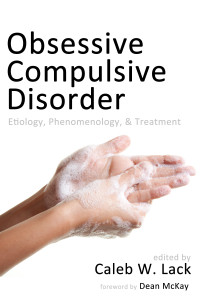 As I have posted about previously, this past spring saw the release of my fifth book, an edited volume titled Obsessive-Compulsive Disorder: Etiology, Phenomenology, and Treatment. I was recently asked to give a talk about one of the chapters, which covers an evolutionarily-informed biopsychosocial model for why certain people (and we as a species) have OCD.
As I have posted about previously, this past spring saw the release of my fifth book, an edited volume titled Obsessive-Compulsive Disorder: Etiology, Phenomenology, and Treatment. I was recently asked to give a talk about one of the chapters, which covers an evolutionarily-informed biopsychosocial model for why certain people (and we as a species) have OCD.
Briefly, I cover what we know about psychological (behavioral, cognitive, cognitive-behavioral), biological (genetics, neurotransmitters, and brain structure), and evolutionary causal factors for OCD. I also illustrate each one of these levels using a case study, and then tie them all together (using the same case study to illustrate a comprehensive etiological model).
It is presented below for your viewing pleasure.
